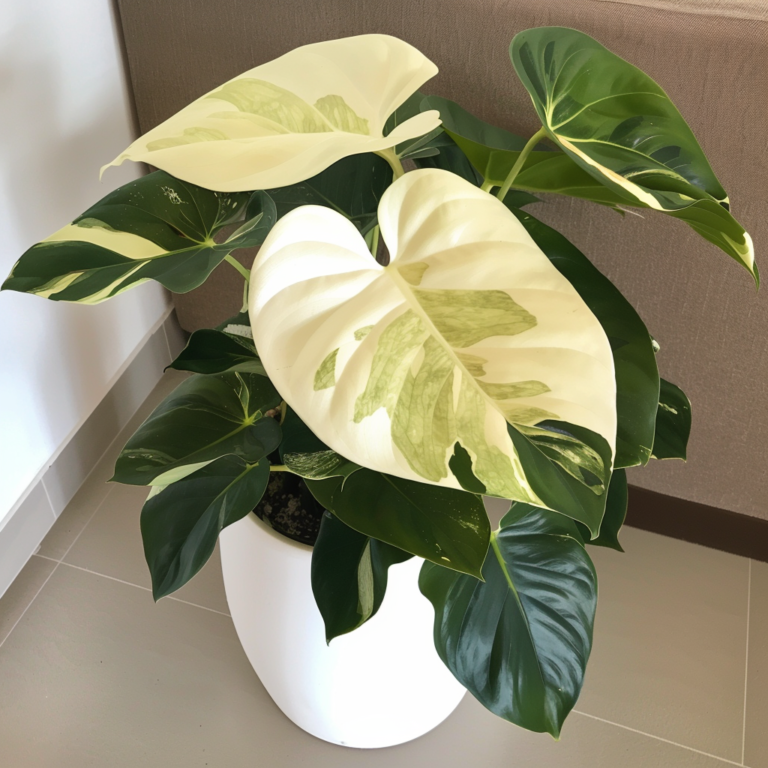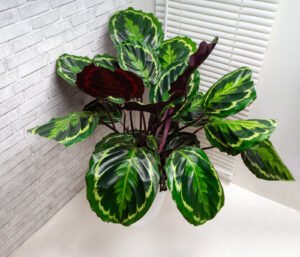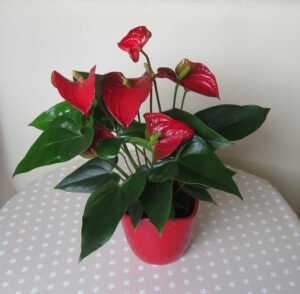I’ve always had a soft spot for the White Princess Philodendron, the regal beauty with those lush, heart-shaped leaves and unique white variegation. Native to the rainforests of South America, this beautiful houseplant really made a statement in my indoor space.
If you love the regal tropical plant as much as I do, you’d surely want to know some easy, tried-and-tested tips and tricks to grow a massive, lush White Princess Philodendron!
1. Thrives In a Well-draining Soil
To keep your White Princess plant happy and healthy, plant and grow it in a rich, quick-draining soil mix. The soil should be porous to prevent it from staying soggy for a long time. Aim for a mildly acidic to neutral pH between 5.6 and 7.
The ideal soil mix for this beauty is equal parts regular potting soil, perlite, coconut coir, and orchid bark. This combination ensures excellent drainage and aeration, allowing your plant’s roots to breathe and grow.
2. Likes Moderate Watering
White Princess Philodendron doesn’t like it too wet. So, water it every 7-10 days or when the top 1-2 inches of soil feel dry to the touch. The soil should be slightly moist but not soggy, as overwatering can lead to brown or yellowing leaves and even root rot.
On the other hand, don’t let the soil dry out completely. You can use a stick to check the soil dryness, and if you’re unsure, err on the side of caution and water less than you think you should.
Note: Reduce watering in winter and fall. Once every fifteen days is fine. But check the soil texture. Only water if it’s dry.
3. Needs Bright, Indirect Sunlight
As a tropical plant, the White Princess plant adores bright, diffused sunlight. It thrives in bright, indirect light but can also tolerate a slightly low light spot for some time. But remember, the plant needs natural bright sunlight (rather than artificial light) to maintain its vibrant white variegation.
But avoid placing the plant in harsh, direct sunlight, as it can damage the sensitive leaves and cause them to turn brown. To ensure all sides of the plant receive equal light, regularly rotate the pot towards the window.
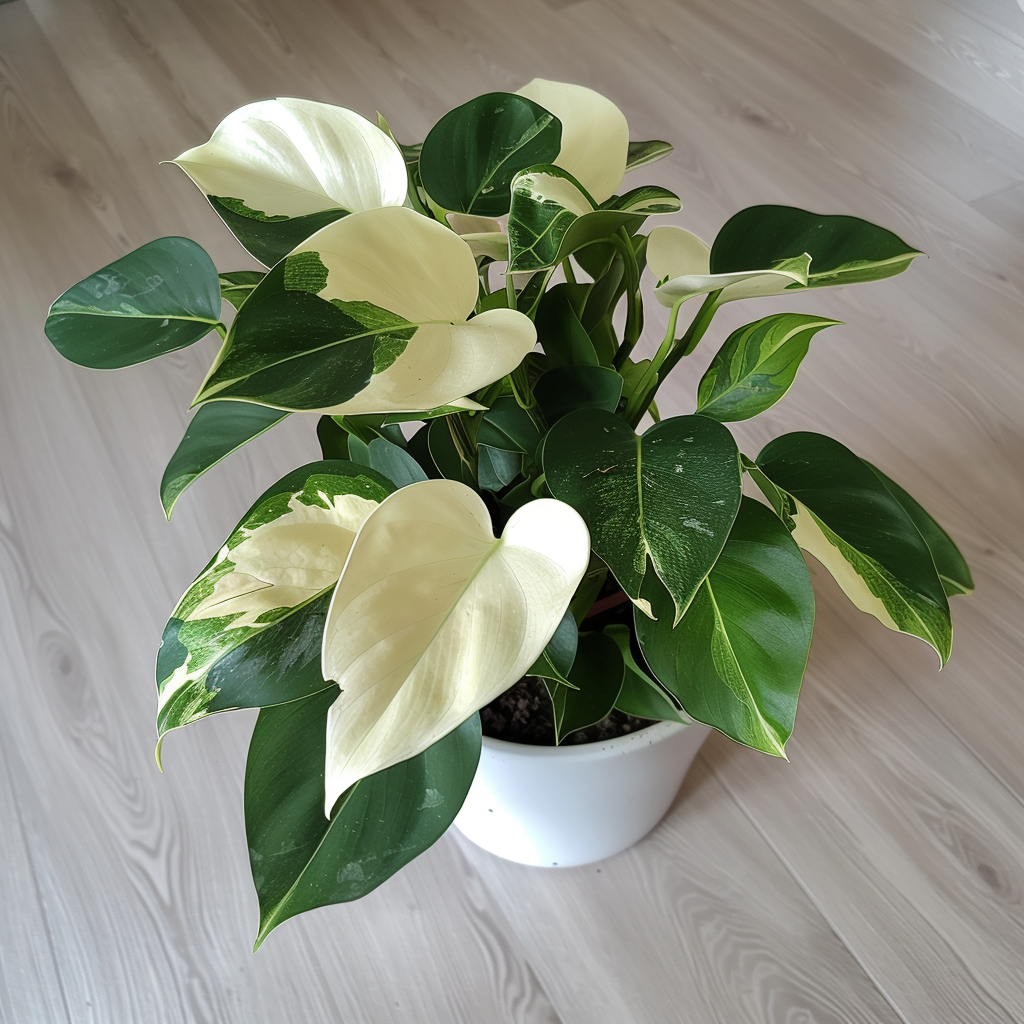
4. Likes a Warm & Humid Environment
To keep your White Princess Philodendron content, maintain an ideal temperature range of 18-23°C (64-73˚F). Avoid exposing the plant to temperatures below 60°F (17°C) and protect it from frost, as it may not survive.
If you keep your plant outdoors during summer, remember to bring it back inside for the winter months.
Being a tropical plant, the Philodendron White Princess plant requires high humidity levels of about 60-80%. A too-dry environment can cause the edges of the leaves to turn brown.
You can regularly mist the leaves every 3-4 days with distilled water using a spray bottle. Or, simply use a humidifier for a few hours each day to meet its humidity needs.
Another option is to place the pot on a pebble tray filled with water, which will gradually evaporate and increase the surrounding humidity. Just make sure the bottom of the pot isn’t sitting directly in the water, as this can lead to root rot.
Try This: If you have other tropical indoor plants, put them together. They work as a humidifier for one another.
5. Regular Leaf Cleaning for a Lush Look
Regular cleaning of the White Princess Philodendron’s leaves is a must to maintain its regal appearance. Use a damp cloth or sponge to clean both sides of the leaves.
While regular cleaning with water is sufficient, you can occasionally use a diluted disinfectant, lemon water, or even coffee water to give it a shine and keep the pests at bay.
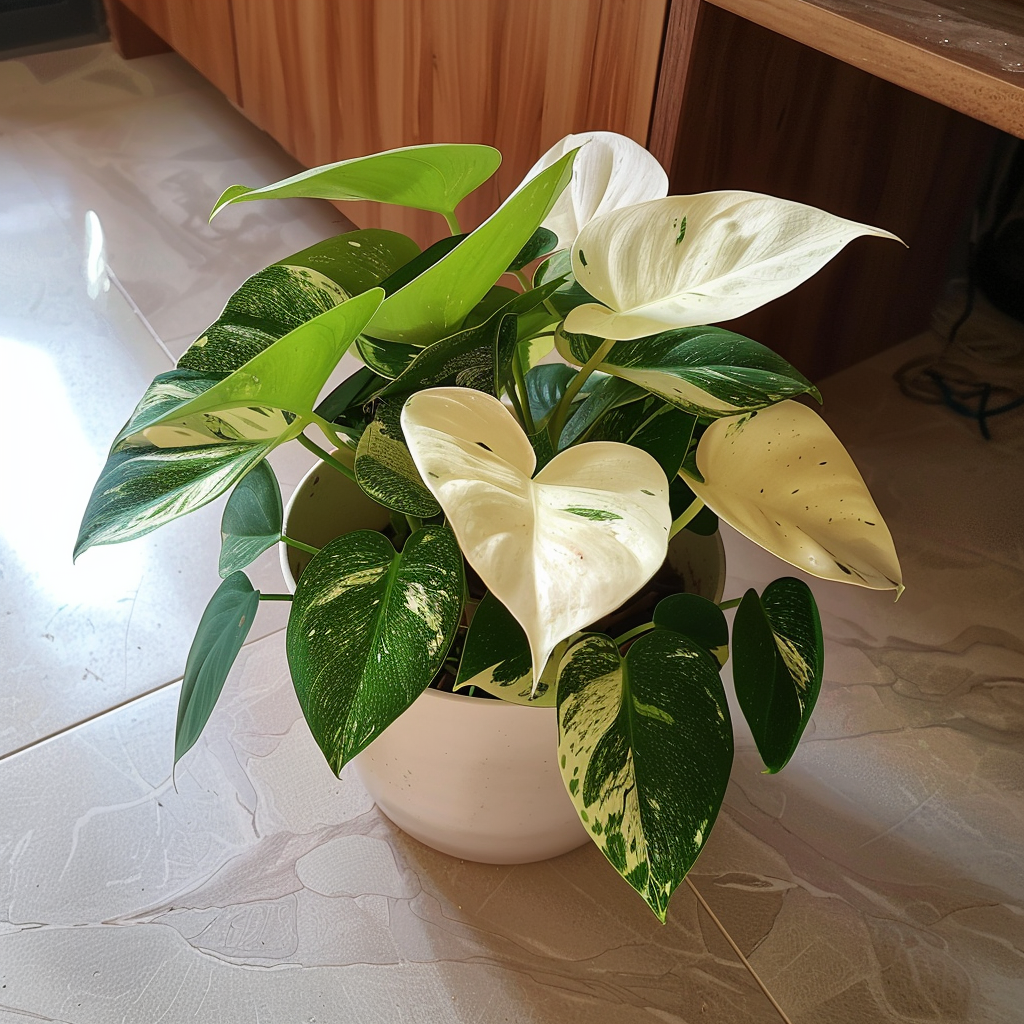
6. Grows Well With Regular Feeding
To encourage lush growth, your White Princess Philodendron plant needs regular fertilization. A 10-10-10 liquid fertilizer, diluted according to the instructions, is the best choice. It’s best to fertilize shortly after watering when the soil is still moist.
Feed your plant once or twice a month during the growing season (spring and summer), but reduce the frequency to once every 2-3 months in winter or fall. And remember to start with a smaller amount of fertilizer and gradually increase as needed.
7. Prune It to Maintain the Shape
If you prefer a bushier appearance for your Philodendron White Princess rather than a vining growth habit, pruning is the way to go. Only prune your royal beauty during the growing season to encourage new growth.
Besides, remove any brown or infected leaves, and trim extra stems to maintain your desired plant shape and size. When pruning, make sure to cut just above a leaf node to let the new leaves grow.
8. Propagate It Easily When You Want!
Propagating your White Princess Philodendron is an exciting way to expand your collection or share it with fellow plant enthusiasts. Follow these steps for successful propagation:
- Clean your scissors or pruners before cutting to prevent infections.
- Choose a green stem with a node and make a clean cut.
- Seal the cut end of the stem by dipping it in liquid wax or pressing it against a hot frying pan.
- Place the stem in water, ensuring the node is submerged. Keep it in a warm, bright spot, and change the water every few days.
- Once the roots have grown a couple of inches, transfer the cutting to a new, fresh soil mix.
Common Problems with Royal White Philodendrons & Their Solutions
Even with the best care, your White Princess Philodendron plant may encounter some issues. Here are common issues and their easiest solutions:
- Yellow Leaves: This indicates too much water. Simply reduce the watering frequency and allow the soil to dry a bit.
- Brown edges on foliage: The plant is experiencing too much dryness. Increase humidity by misting or using a pebble tray.
- Pale, faded variegation: This is a sign of insufficient natural light. Move your plant to a brighter spot to restore its vibrant colors.
- Root Rot: Overfeeding or soggy soil can cause root rot. Improve the soil mix by adding more perlite for better drainage.
With proper care and attention, your Philodendron White Princess plant can thrive and add regal elegance to your indoor jungle. Just be patient and adjust your care routine as needed. I’ve also prepared a Calathea plant care guide – another gorgeous house plant you’d want to have!

